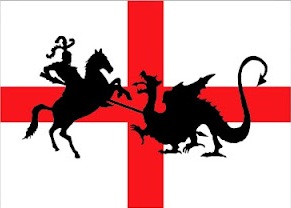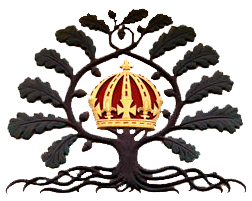Anti-Calvinists: The Rise of English Arminianism c.1590-1640
 Embryo Parson Posted on
Embryo Parson Posted on  Saturday, May 18, 2013 at 01:11AM
Saturday, May 18, 2013 at 01:11AM I read this book, Nicholas Tyacke's doctoral dissertation published by Oxford University Press, some months ago. Tyacke presents an interesting thesis. Tonight I found a chapter-by-chapter summary of the book, which I post here for those who might be interested in reading it:
Abstract
This is a study of the rise of English Arminianism and the growing religious division in the Church of England during the decades before the Civil War of the 1640s. The widely accepted view has been that the rise of Puritanism was a major cause of the war; this book argues that it was Arminianism — suspect not only because it sought the overthrow of Calvinism but also because it was embraced by, and imposed by, an increasingly absolutist Charles I — which heightened the religious and political tensions of the period. Almost all English Protestants were members of the established Church. Consequently, what was a theological dispute about rival views of the Christian faith assumed wider significance as a struggle for control of that Church. When Arminianism triumphed, Puritan opposition to the established Church was rekindled. Politically, Charles and his advisers also feared the consequences of Calvinist predestinarian teaching as being incompatible with ‘civil government in the commonwealth’.
Introduction
This chapter introduces an story of the rise of English Arminianism and the growing religious division in the Church of England during the few decades which preceeded the Civil War in the 1640s. This view, which is widely accepted, has been that the rise of Puritanism was a significant cause of the war; this book argues that it was Arminianism — under suspicion partly because it sought the overthrow of Calvinism and also because it was acccepted by, and imposed by, an ever increasing absolutist Charles I — which heightened the religious and political tensions of the period. Almost all English Protestants were members of the established Church. As a result, what was a theological dispute about rival views of the Christian faith assumed greater significance as a struggle for control of that Church. When Arminianism succeeded, Puritan opposition to the established Church was reignited. Politically, Charles and his advisers also feared the consequences of Calvinist predestinarian teaching as being incompatible with ‘civil government in the commonwealth’.
1 The Hampton Court Conference and Arminianism avant la lettre
The Hampton Court conference was held in 1604 to discuss the status of the English Church and Arminianism along with a discussion on doctrine of predestination. At this conference Calvinism was discussed for the first time and it was also the last time when the predestinarian question was handled by the English religious leaders under the influences of the continental Arminian. The English hierarchy and the Puritans were the two authorized parties expected to discuss the state of the English Church at the conference after Puritan reformers failed to obtain new religious settlement from James. At the conference the Puritan stated that the Lambeth Articles needed to be added to the existing English confession of faith — the Thirty-nine Articles.
2 Cambridge University and Arminianism
In the early 1590s English Calvinism was very much in ascendant and much obvious at Cambridge University. At Cambridge a direct confrontation between Calvinism and anti-Calvinist sentiment erupted in 1595 during a university sermon delivered by William Barrett. Barrett decided to protest against a public lecture delivered by William Whitaker, Regius Professor of Divinity, ‘against the advocates of universal grace’, as his reply against the Cambridge Calvinists. As expected Barrett was asked to appear at the Cambridge Consistory Court and forced to recant, but Barrett then appealed to the Archbishop Whitgift. Some modern historians also have raised question against the Calvinism of the Lambeth Articles.
3 Oxford University and Arminianism
Cambridge and Oxford University followed Calvinism, but during 1590 there was a huge clash between Calvinism orthodoxy and emergent Arminianism at Oxford. The difference between these was explained on the basis of fact that anti-Calvinism was checked at Oxford around ten years previously. This differences were explained by Anthony Corro, who was an ex monk from San Isidro near Seville and taught at Oxford from 1579 to 1586. Corro published ‘Tableau de l'awre de dieu’ in 1569 and expressed his views on the three heads of the religion, namely: predestination, free will, and justification by faith alone. Corro also applied for and was refused an Oxford doctorate of divinity.
4 The British delegation to the Synod of Dort
The official British delegation at the Synod of Dort played a critical role in the rise of English Arminianism. This was an international Calvinist gathering, which condemned the doctrines of the Dutch Arminians in 1619 and catalysed the English religious thought in the early 17th century. Soon news of the Arminian controversy spread to Holland, at the Synod of Dort, and the controversy was discussed far and wide. As a result of this gathering, differences among English theologians were brought out in the open. After this gathering, suspension of judgement on the nature of the relationship between grace and free will became harder, and scholars directed their studies to resolve this problems.
5 Bishop Neile and the Durham House group
During the 1620s there was a transformation in the official Church of England teachings. Bishop Neile became an important element in the religious transition during this decade by establishing the system of Arminian patronage and protection. The role of John Hacket contrasted with role of Neile in terms of his theological seniors, which pleased all sides by their touching opinions about predestination and converting grace; they made no discrimination about which or which propugners should be gratified in their advancements. He went through more bishoprics than any of his contemporaries such as Rochester, Coventry, and Lichfield, Lincoln, Durham, Winchester, and York.
6 Richard Montagu, the House of Commons, and Arminianism
The debates over Calvinism and the Lambeth Articles were provoked by the anti-Calvinist writings of Richard Montagu in the 1620s. His opponents tried to link his writings and books with a conspiracy to topple the established teachings of the English Church. The parliamentary case against Montagu involved his two works published in 1624 and 1625 titled ‘A new gagg for an old goose’ and ‘Appello Caesarem’. Montagu also countered both local missionary activities and the latest Catholic apologetic. He also tried to defend himself from attacks by fellow Protestants who considered his writings to be against Arminian teachings.
7 The York House Conference
The House of Commons failed to prosecute Richard Montagu before the House of Lords. In 1624, the Commons referred the Montagu case to the Archbishop Abbot and forwarded a complaint against Bishop Harsnett of Norwich to the House of Lords. A conference was held in February 1626 under the chairmanship of Buckingham and the second session of this conference was attended by Montagu, at Buckingham's residence, York House in the Strand. The subject of this conference was the published view of Montagu and according to Buckingham the conference had been arranged at the request of the Earl of Warwick. The York House conference was designed to defeat the prosecution of Montagu by the House of Commons.
8 Arminianism during the Personal Rule and after
The rise of anti-Calvinist sentiment became considerable in terms of both power and number. During the reign of Charles, the King decided to go against those who claimed to be on God's side, by favouring a clerical group prepared to preach monarchical authority in defence of its beliefs. Laud and Neile now actively sought to enforce Charles's religious declaration of 1628 throughout the dioceses of England and Wales, which meant in effect the proscription of Calvinism. Having the royal support Laud and Neile were now free to implement their ideas. The consequences of the rise of Arminianism were serious for the contemporary Puritanism, as it altered the doctrinal basis of English Church membership.
Conclusion
Along with various other issues, religion played a major contributory role in the English Civil War. The religious fears voiced in the late 1620s were given increasing substance during the 1630s. The term Arminian is the least misleading among the terms which can be used to describe the religious change of this time. The term Arminian denotes a coherent body of anti-Calvinist religious thought, which was gaining ground in various regions of early 17th-century Europe. Calvinism was also attacked as being unreasonable. The rise of English Arminianism challenged the Calvinist world picture, which envisaged the forces of good and evil involved in a struggle that would only end with the final overthrow of the Antichrist.





Reader Comments